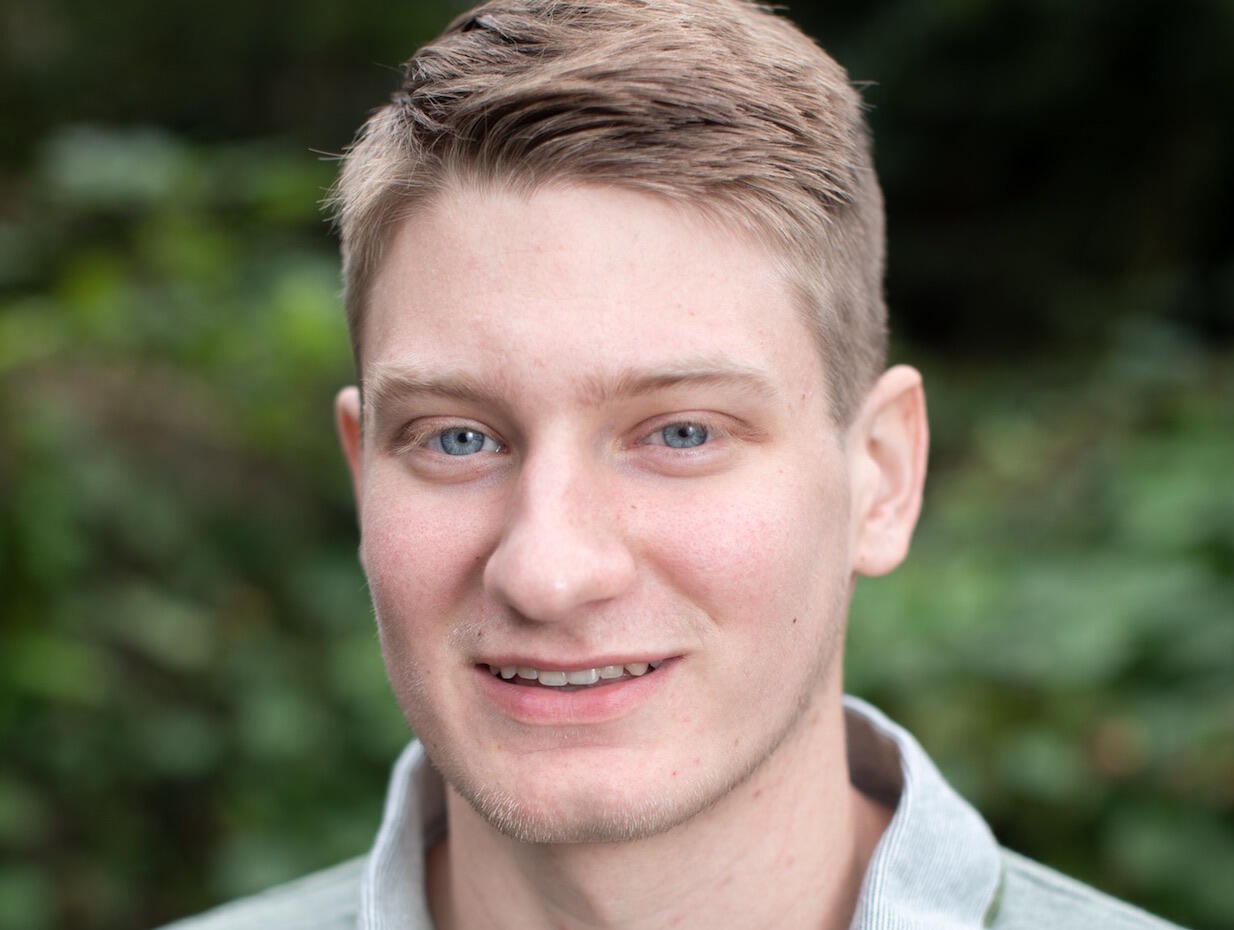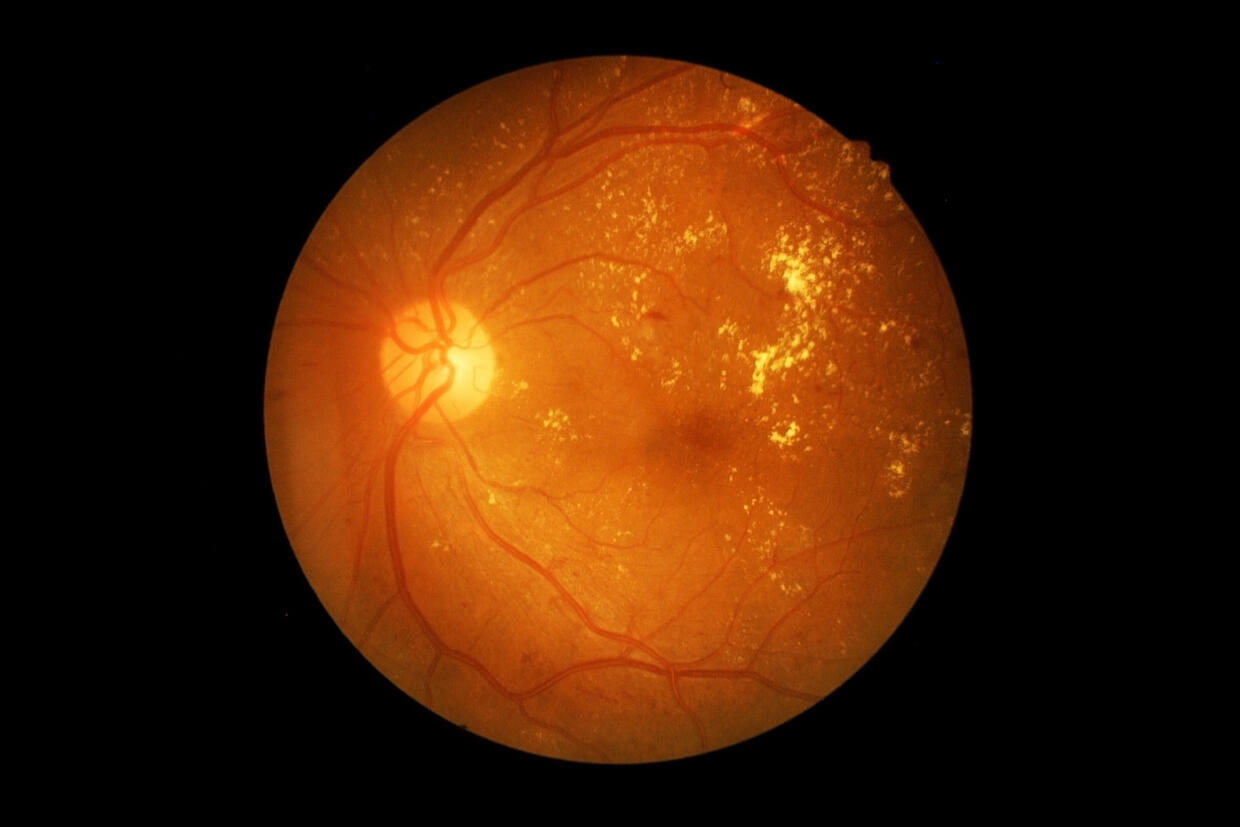
April 30, 2020
VCU student’s work in nanomedicine research lab could benefit patients with diabetic retinopathy
The current treatment for the disease, monthly intravitreal injections, are only effective in about half of patients.
Share this story
Though many of VCU’s annual Research Weeks events have been canceled due to the COVID-19 pandemic — including the annual Poster Symposium for Undergraduate Research and Creativity — the university is curating a digital archive and slideshow of undergraduate research posters. The deadline for submissions is June 1. Across VCU, students continue to hone their burgeoning research skills. These are some of their stories.
Russell Simmers’ interest in researching diabetic retinopathy began after he shadowed a retinal specialist for a semester during his freshman year at Virginia Commonwealth University. A disease of the retina, diabetic retinopathy is one of the leading causes of blindness in the world.
“It’s hard to get medicine to the retina in the back of the eye so you have to do intravitreal injections into the eye once a month. I saw more than 10 of the intravitreal injections in a day,” said Simmers, a junior studying physics in the College of Humanities and Sciences and a member of the Honors College.
Simmers learned of the side effects and the price of the treatment, which can cost up to $3,000 a month. “All of that piqued my interest,” he said.
When he discovered that Qingguo Xu, Ph.D., an assistant professor in the School of Pharmacy and principal investigator in a diabetic retinopathy study, was conducting research in his lab, Simmers asked to join.
“It’s a coincidence that it worked out,” said Simmers, who has been researching a system to treat diabetic retinopathy with an injection that lasts longer than three months and could be more effective with minimal side effects. “Nearly 50 percent of patients do not fully respond to the current medication,” he said.

His research project was funded through a fellowship from the VCU Undergraduate Research Opportunities Program.
The data suggested that the drug fenofibrate, commonly prescribed for the treatment of blood lipid levels that are too high or low, could be beneficial for diabetic retinopathy.
Fenofibrate is only available in oral solid dosage forms for humans. The intravitreal injections of the drug were tested in preclinical models but have not been tested and approved in humans, said Xu, a Blick Scholar.
Research indicated that nanomedicine might be a promising way to deliver the drug, because it could provide a sustained drug release, eliminating the need for frequent dosing.
Nanoparticles — tiny particles of biodegradable plastic tested with fenofibrate in a previous one-month study — showed potential. “If we could tweak that drug so it was effective and would stay in the eye for six months, patients would only have to get two injections a year,” said Simmers, who was not part of the prior one-month study.
The research being conducted in Xu’s lab is based on a six-month study that began last year. “We collaborated with Professor Jian-xing Ma at the University of Oklahoma Health Sciences Center, and they injected the fenofibrate nanoparticles into multiple diabetic retinopathy animal models to test the long-lasting efficacy,” Simmers said. “We hope to eventually go to clinical trials to see if the fenofibrate nanoparticle is effective in people and could be an actual treatment that would benefit people around the world.”
Simmers has made a significant contribution to the research project, Xu said. “He is very helpful. He’s responsible and eager to help. He has impressed me.”
After Simmers graduates, he plans on going to medical school to become a physician-scientist with an interest in both ocular health care and improving treatment of ocular diseases. “I want to use scientific methods to benefit my patients and patients all over the world,” he said.
Conducting research in Xu’s lab has been extremely beneficial and personally satisfying, he added.
“It’s really cool to see a real-world problem that you are passionate about and be able to find an opportunity to help and be part of the solution to the problem.”
Subscribe to VCU News
Subscribe to VCU News at newsletter.vcu.edu and receive a selection of stories, videos, photos, news clips and event listings in your inbox.










